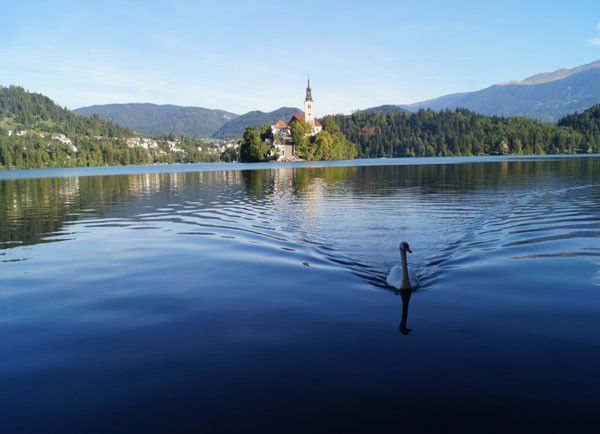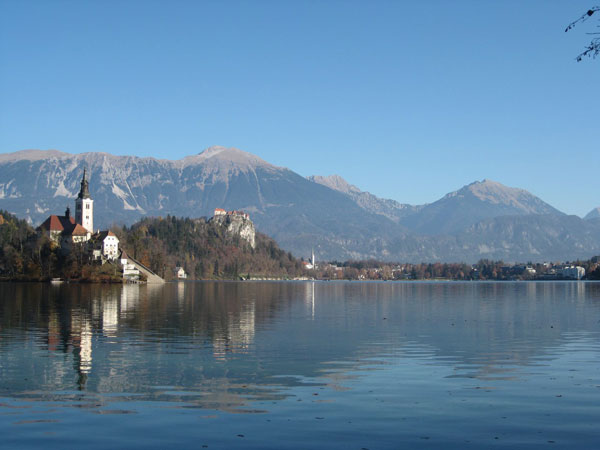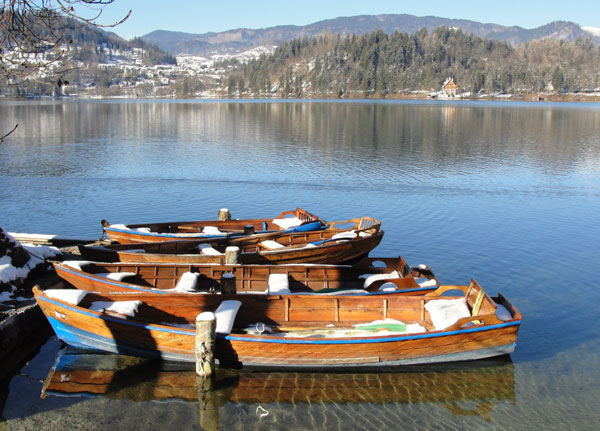Bled (pronounced [ˈbleːt] (About this sound listen); German: Veldes, in older sources also Feldes[3]) is a town on Lake Bled in the Upper Carniolan region of northwestern Slovenia. It is the administrative seat of the Municipality of Bled. It is most notable as a popular tourist destination in the Upper Carniola region and in Slovenia as whole, attracting visitors from abroad too.
The town was first attested in written sources as Ueldes in 1004 (and as Veldes in 1011). The etymology of the name is unknown and it is believed to be of pre-Slavic origin. The German name of the town, Veldes, was either borrowed from Old Slovene *Beldъ before AD 800 or is derived from the same pre-Slavic source as the Slovene name.
Geography
Bled is located on the southern foot of the Karawanks mountain range near the border with Austria, about 50 km (31 mi) northwest of the state capital Ljubljana. South of Lake Bled are the densely forested Pokljuka and Jelovica plateaus, the easternmost parts of the Julian Alps. Here the Sava Bohinjka and the parallel Bohinj Railway lead up to the Bohinj basin, Lake Bohinj, and the Triglav massif.
A number of rises (Grad 599 m, Straža 646 m, Kozarca 558 m, Osojnica 756 m, and Ravnica 729 m) separate the localities of Bled around the lake, the former villages of Grad, Mlino, Rečica, Zagorice, and Želeče.
The lake is 2.12 kilometres (1.32 mi) long and 0.5 to 1 kilometre (0.31 to 0.62 mi) wide. In summer, the surface water reaches 25 °C (77 °F) and retains a temperature up to 18 °C (64 °F) until autumn. As such, it is suitable for swimming. In colder winters it freezes and is used for ice skating.
There is a thermal spring (23 °C or 73 °F) near the lake, next to the Bled Fault. Its water is used in indoor pools in two hotels.












